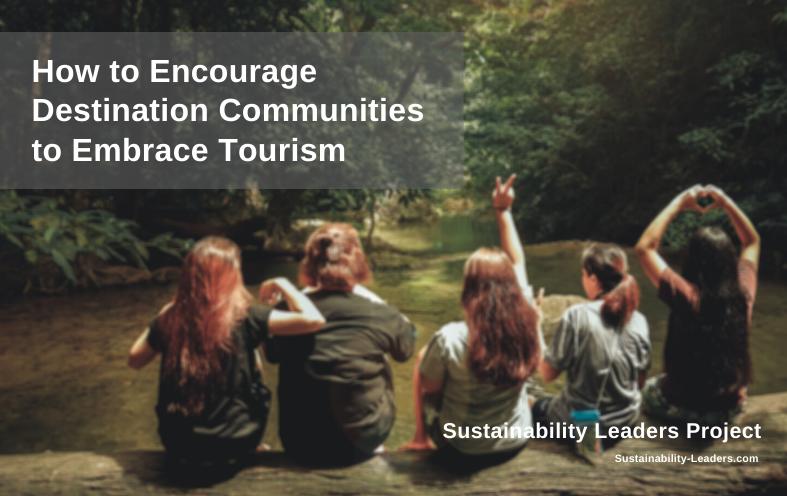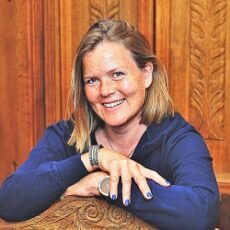
Travel restrictions and the lockdown in the past few months have breathed a new lease of life into many cities, especially those that have suffered from overtourism. With tourism set to make a comeback as a means to revive the economy, will the host communities be willing to share their space with visitors, given the additional threat of new infections? What can destination marketers and tourism managers do to encourage their communities to welcome tourists again?
We asked our panel of sustainable tourism specialists. Below the answers (highlighted respondents are available as consultants or speakers).
Our key takeaways:
- Give communities the flexibility and freedom to reopen their neighbourhoods when they feel comfortable.
- Use this pause in international tourism to hear the needs of your destination communities and work together, as a team, to revive tourism in a way that feels good for all.
- Reopening borders has its pros and cons – as any infections in remote areas with limited access to healthcare would be catastrophic. At the same time, no tourism often means no income.
- DMOs must plan thoroughly and convince locals of the safety measures in place, to engage them in tourism without fear.
- Engage with only those tour operators who have a track record of caring about communities.
This is just a snapshot of the very intriguing and insightful answers from specialists around the world, which you find in full length below.

Brian Mullis
Interview | Book Brian as speaker
United States
Destination managers, marketers, and host communities need to work together to develop recovery, resiliency strategies and plans, and avoid a siloed approach.
Host communities should be empowered to make decisions based on what’s best for the community as a whole and should be encouraged to take a phased approach to reopen on their own timeline.
 Jonathon Day
Jonathon Day
Interview | Book Jonathon as speaker
United States
We perpetuate the notion that tourism is something that destination communities must endure if we believe that every destination must welcome back tourists. Welcoming visitors is a choice, and some communities should exercise their rights to restrict visitors during the restart.
Even so, now is a good time to have a balanced conversation about tourism in many host communities. Six months ago, overtourism was a hot topic (and it will be again in the years to come). Today, even in the destinations with the worst overtourism, there is a recognition of the loss caused by a lack of tourists.
Between the ghost towns of the coronavirus lockdown and the worst overtourism, is a tourism system that maximises benefits and minimises costs.
There has never been a better time to advocate the benefits of tourism (in its absence, the loss is clear) and to recognise the negatives. As an industry, it is time that we took responsibility – that we reach out to stakeholders, understand their issues, and work with them to create destinations that work for the host communities, as well as visitors.
 Kelly Bricker
Kelly Bricker
Interview | Book Kelly as speaker
United States
First, ensure the health and well-being of residents – consult public health experts and recommendations – prioritise the health and safety of the destination first and foremost.

Kirsi Hyvaerinen
PRÁTTO Consulting d.o.o | Interview | Book Kirsi as speaker
Montenegro
Persuasion would be the wrong approach altogether. If a community wants fewer visitors or none at all – you must respect and support that – be a manager, not a marketer – and open a dialogue at eye level.
Anna Spenceley
Interview
South Africa
A recent National Geographic article on Monteverde in Costa Rica highlights this exact point. The article says – “The crisis is a double-edged sword for locals, including Laura Mora, the cook at La Cuchara de la Abuela, a popular soda or diner. “I’m scared of the tourists not returning, and I’m also scared of them coming back and bringing the virus here,” she says. An outbreak in Monteverde would be disastrous for the community’s basic healthcare facilities, which for the majority of denizens who can’t afford private doctors consists of a small state-run clinic with no intensive care unit.”
Destinations will need to be careful to understand the concerns of people that live there and plan the conditions for tourism to re-emerge there carefully to ensure they are respected.
Jeremy Sampson
Interview
United Kingdom
We’re hearing from some destinations that communities have rekindled a sense of ownership of their places, which is great and should be encouraged as part of the engagement process about a shared vision for tourism’s future. But of course, communities are also expressing concerns about bringing back the crowds, the pollution, and now there are the health implications of international tourism.
I don’t see the job of a DMO as persuading communities that they should want tourism and be grateful. Rather, it is to facilitate an honest and open-ended dialogue about their hopes and concerns and to ensure the debate is rooted in evidence so that decisions can be made about how to support a complex needs-based agenda.
Kevin Teng
Interview
Singapore
Before welcoming tourists again, it is important that the situation in the country is stable enough. That said, communities may still be hostile and as a destination marketer, it is essential to communicate to these communities of the mitigation measures in place to safeguard their health and well-being.
Communication needs to be frequent and transparent to these communities, and marketers need to cleverly communicate on how the influx of tourism can help to boost the local economy and benefit them whilst not overpromising them at the same time. By being able to realise their own tangible benefits, destination communities may be less hesitant towards welcoming tourists once again.
Marcus Cotton
Interview
Nepal
If communities do not want tourists, the wish of the community should be respected.
If the community wants tourists but is concerned about infection risk, etc., then engage with them and give time to discuss, explain protocols for safety, etc.
Masaru Takayama
Interview
Japan
It is quite understandable but everybody has the right to travel. So the destination can offer tours to operators that only go through their designated training, preferably going through the GSTC or pertinent sustainable tourism training first. The destination by then should have set up a mutual consensus or dialog with the community about what type of tourism they can embrace with the future happiness and community benefits secured.
Steve Noakes
Interview
Australia
Avoid over-promising the benefits of tourism to the local community. Be honest and realistic within the context of your own destination. Tourism is about net benefits that happen when you can maximise the benefit and minimise any negative impacts (economic, social, and environmental).
More about the sustainable tourism expert panel here – including previous sessions and answers to some of the most pressing issues linked to making tourism more sustainable.
Enjoyed this post on how to encourage a destination’s host communities to embrace tourism and welcome visitors, especially during the current coronavirus pandemic? Thanks for sharing!











